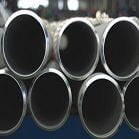The main problems of 18Cr austenitic stainless steel welding and preventive measures
As austenitic stainless steel contains high chromium, can form a dense oxide film, so it has good corrosion resistance. When containing 18% Cr, containing 8% Ni, you can get a single austenite organization, so austenitic stainless steel has good corrosion resistance, plasticity, high temperature performance and welding properties. However, under different working conditions, austenitic stainless steel welded joints often face some special problems, including intergranular corrosion, stress corrosion, knife corrosion, welding thermal cracking, alpha phase embrittlement and other construction defects.


- Corrosion analysis of welded joints
- Control of the ferrite content of welded joints
